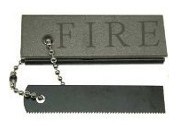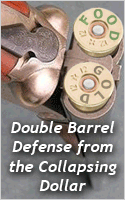When it comes to food storage, shelf life can be tricky. How can you know when your items have expired or if they are still good to eat? Experienced food storage individuals know that it is important to continually rotate your storage in order to effectively use your food and eliminate, or at least reduce, waste. However, sometimes it just seems impossible to use all your storage in a timely manner, which can leave you uneasy about what to eat and what to throw out.
It may surprise you to find that many items last longer than you might expect. For example, did you know that honey, corn syrup, and sugar can store indefinitely if stored correctly in tight containers and a dry, cool environment? Of course, storing all items in a food supply this way will ensure safer, quality foods. Unfortunately, all items don’t have quite as long of a shelf life. If you’re looking for answers on specific items that are often found in food storage, take a look at the list below.
- Dry cereal, unopened: 1 year (for best quality) / Opened: 3 - 4 months
- Uncooked Oats: 1 year in pantry or freezer
- Whole Wheat Flour: 6 - 8 months in fridge / 2 years in freezer
- All-Purpose Flour: 1 year in pantry / 2 years in fridge or freezer
- Dried Pasta: 3 years in pantry
- Brown Rice: 3-6 months in pantry / 6-12 months in fridge / 12-18 months in freezer
- Canned Beans, unopened: 2 - 5 years
- Peanut Butter, unopened: 2 years / Opened: 3 months in pantry and 3-4 in fridge
- Dried Herbs: 1-3 years
- Canola or vegetable oil: 2 years in pantry
- Olive Oil: 2 years in pantry or fridge
- Shortening, unopened: 2 years / Opened: 1 year
Hopefully some of these shelf lives surprise you and extend the life of your food storage (or what you thought it was.) Again, it’s important to store your items correctly in order to maximize the shelf life. In addition, one of the best things you can do in order to monitor the expiration dates of your food is to simply label them. When you purchase (or perhaps personally package) food items, take a black marker and label the purchase date on it. It is also a good idea to write when it will expire. You may also want to consider printing a list and putting it in your food storage area, which will tell you how long certain items are safe to eat.
You can also invest in some food storage shelving that is designed to rotate your food storage for you. You put your canned items on the shelving, with the newest items at the back, and then simply take the front ones first.
Keeping track of each food item’s shelf life can be a bit daunting at first, but by doing these simple things, you can make your life a whole lot easier and your food safer to eat.
ABOUT THE AUTHOR: Lee Flynn is a freelance writer with interests in outdoor survival and food storage.









